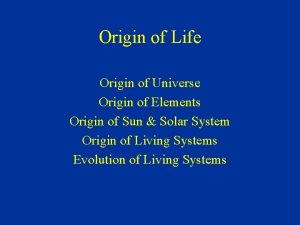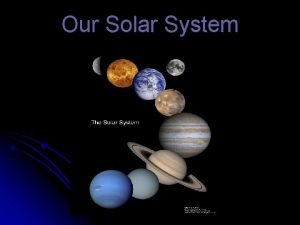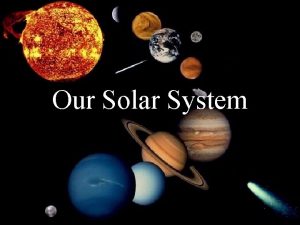Origin of Life Origin of the Solar System








- Slides: 8

Origin of Life


Origin of the Solar System • Earth is estimated to be ~4. 6 byo – Radiometric dating of rocks & meteors • Nebula: cloud of gas & dust in space • Nebula Hypothesis: – Gravity pulled much material to center (Sun formed) – Planets: remaining materials

Ancient Earth • Atmosphere contents: – Ammonia, H 2 O vapor, Methane, CO 2 • Climate: – Extreme heat due to meteor impacts & volcanic activity • Eventually Cooling: Water vapor condensed (oceans formed) Click on picture to play video clip

• Hypothesis: Energy from lightning created organic materials from inorganic ingredients • Experimental Set-Up: – Ammonia, H 2 O vapor, Methane, CO 2 gases added – Electricity added (simulate lightning) • Result: Amino Acids & later nucleotides • Importance: Could this be how life began to take shape?

Murchison Meteorite

Cell Formation? • Iron-Sulfide bubble hypothesis – Hydrothermal vents trapped organic molecules – Wall acted as first cell membrane • Liposomes – Spheres of lipids – Can form around organic molecules – Hypothesis: 1 st cell membranes?

Kobe Kuiz • What is a nebula? • What does the nebula hypothesis try to explain? • What were the ingredients used in Miller and Urey’s experiment? • Why did Miller and Urey choose to use these ingredients (and not other ingredients)? • Why was Miller and Urey’s experiment of great importance? • What does the iron sulfide hypothesis try to explain? • Why are liposomes relevant to evolution?















